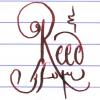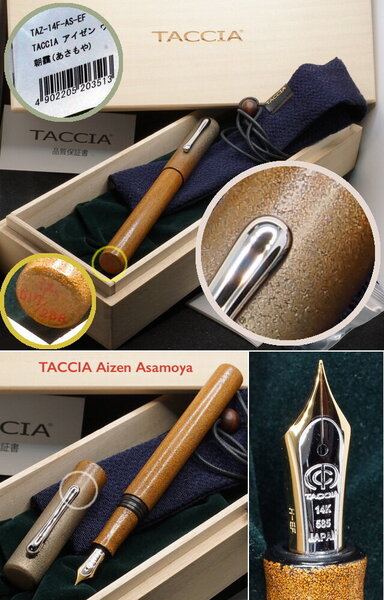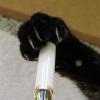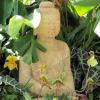Search the Community
Showing results for tags 'taccia'.
-
Taccia Cha Brown This was part of blind ink testing, on another FP site. It's a fun practice, one needs to throw most prejudices out and focus on the ink This is review #173. It is my understanding that the Mandarin word Chá gave birth to the word Cha in...
-
-
-
-
-
-
-
-
-
-
-
-
Taccia Hiroshige Utagawa Ainezu This was part of 5 blind ink testing. Many thanks @Lithium466 for the sample 🙏🙏🙏 It is one of the most intriguing blue blacks, I’ve ever tested, bordering grey. The colour is refined and elegant. However, it’s not for those people who loved smooth, cushio...
- 33 replies
-
TACCIA Ukiyo-e Hokusai koiai TACCIA is a Japanese stationery company, that is part of the Nakabayashi group. They offer high-quality fountain pens, inks, pen-rolls, notebooks, etc. More specifically, TACCIA produce a line of inks, inspired by the unique look of Ukiyo-e paintings from Jap...
- 18 replies
-
- taccia
- taccia ukiyo-e
-
(and 4 more)
Tagged with:
-
TACCIA Ukiyo-e Utamaro usuzumi TACCIA is a Japanese stationery company, that - as far as I know - is now part of the Nakabayashi group. They offer high-quality fountain pens, inks, pen-rolls, notebooks, etc. More specifically, TACCIA produce a line of inks, inspired by the unique look of...
- 5 replies
-
- taccia
- taccia ukiyo-e
-
(and 2 more)
Tagged with:
-
This ink was part of blind ink testing on another pen site. It's fun testing inks without knowing anything about them. It removes a lot of preconceived ideas about certain brands... For my first Taccia ink, I got an unapologetic screaming pink It’s fun ink for washes for accents,...
-
TACCIA Ukiyo-e Utamaro ume murasaki TACCIA is a Japanese stationery company, that - as far as I know - is now part of the Nakabayashi group. They offer high-quality fountain pens, inks, pen-rolls, notebooks, etc. More specifically, TACCIA produce a line of inks, inspired by the unique lo...
-
TACCIA Ukiyo-e Hokusai sabimidori TACCIA is a Japanese stationery company, that - as far as I know - is now part of the Nakabayashi group. They offer high-quality fountain pens, inks, pen-rolls, notebooks, etc. More specifically, TACCIA produce a line of inks, inspired by the unique look...
-

TACCIA 8-pen Kimono pen-rol
namrehsnoom posted a topic in Paper & Pen Paraphernalia Reviews and Articles
TACCIA 8-pen Kimono Pen Roll (Mosaic pattern) TACCIA is a Japanese stationery company, that - as far as I know - is now part of the Nakabayashi group. They offer high-quality fountain pens, inks, pen-rolls, notebooks, etc. One of the products TACCIA produces are beautiful Kimono Pe... -
Here in full focus stacked macro glory is the limited edition Taccia Miyabi Imperial Koi. The background is, I think, byakudan-nuri whereas the fish are in rankaku with mother of pearl raden eyes. Usually, koi are not usually represented this large but Taccia made the specific choice to render them...
-
I haven't done any ink reviews in a long time, but I also haven't acquired any inks in a long time. I wasn't really looking for any inks but was looking through the Taccia inks and noticed some new ones. Since Taccia was bought by Nakabayashi, it seems like the Taccia brand is being used to offer in...
- 12 replies
-
- taccia
- nakabayashi
-
(and 2 more)
Tagged with:
-
Taccia Uguisi Review of a sample of Taccia Uguisi received from Vanness Pens. Taccia inks are "born in California", but manufactured in Japan. Vanness calls the color "olive green". I am not sure that I would label the color that way. It is a balanced green with a strong blue component (see ch...
-
ink review : TACCIA Ukiyo-e - Hiroshige - ainezu TACCIA is a Japanese stationery company, that - as far as I know - is now part of the Nakabayashi group. They offer high-quality fountain pens, inks, pen-rolls, notebooks, etc. More specifically, TACCIA produce a line of inks, inspired by...
- 15 replies
-
- taccia
- taccia ukiyo-e
-
(and 3 more)
Tagged with:
-
Here are two limited edition Taccia pens from the Hyakko-Hisho lineup. The Hyakko-Hisho is a compendium of craft techniques from the Edo period including lacquer styles. Taccia has been pulling from that for the past two or three years. Pictured first is the Hakumei or twilight from last year, which...














desaturated.thumb.gif.5cb70ef1e977aa313d11eea3616aba7d.gif)


